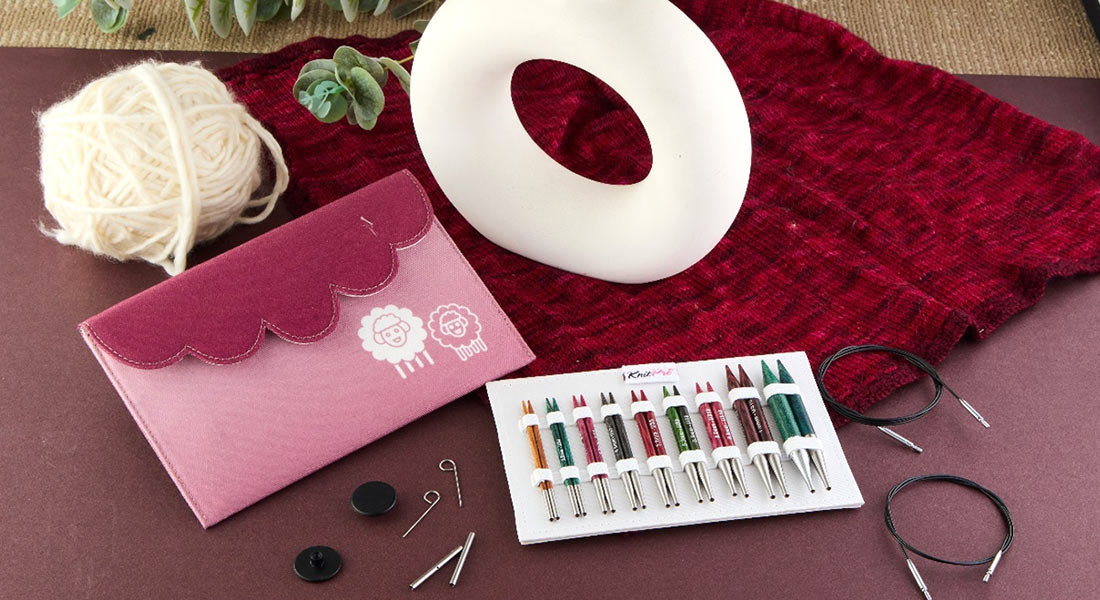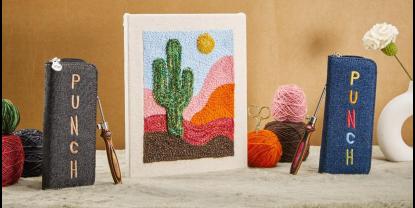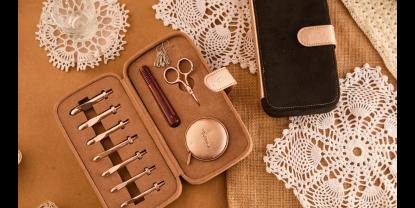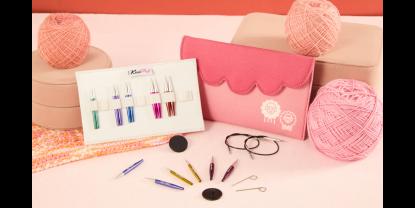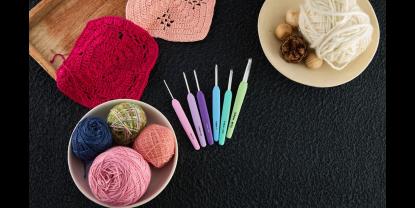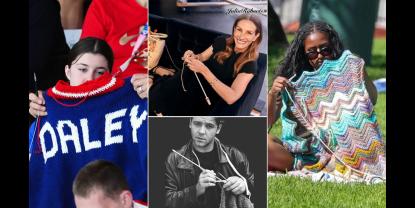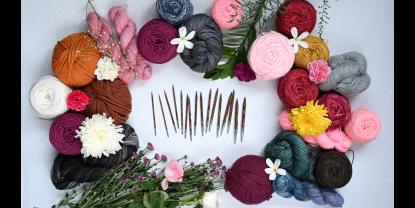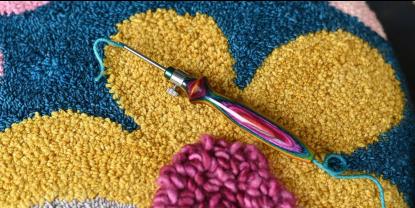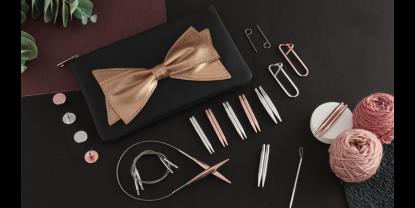In knitting, there are times you will encounter instructions in a pattern that you will need to cast on or even bind off in the middle of your work. For shaping projects such as buttonholes, necklines, or decorative openings, you will need to add stitches or bind off to allow a seamless flow in your knitting. While there are multiple cast on methods that you can make with your knitting needles, not all of them can be applied in the middle of the row. However, for bind off you can stick to the instructions according to the row or round of knit and purl stitches. In this blog we’ll walk you through the techniques to cast on and bind off in the middle of the row. Let’s weigh in the pros and cons along with the best uses to plan your projects better.
1. Backwards Loop a.k.a. Single Cast-on a.k.a. the Half-hitch Cast-on
The backwards cast-on goes by many names and can be attempted by beginners in knitting. It is the easiest and quickest way to add stitches mid-row on your knitting needles however can be loose if not tightened properly.
Steps:
1. Twist the working yarn around your thumb to create a loop.
2. Slide the loop onto the right needle.
3. Pull gently to secure, but don’t tighten too much.
4. Repeat until you’ve added the required stitches.
Best for - Small stitch additions like buttonholes or at the end of the row. Works great with projects on single pointed needles.
Pros
- Fast, quick, simple and easy
- Easy to remember
- Goes in the direction you're knitting (right to left)
Cons
- Difficult to knit into
- Difficult and unstable to pick up stitches from
- Can be quite loose and sloppy-looking
There's also a double-twist variation of the backwards loop method that takes care of some of the issues: it looks prettier and makes a more stable edge.
2. Knitted Cast-on
Knitted cast-on is one of the cast-on methods you learn very first when you're a beginning knitter. It's very easy to do and to remember because you're essentially working the knit stitch over and over. Another upside is it can be used at the start of your project and in the middle of a row. If you only wanted to learn one cast-on method, this is it! Use anytime, anywhere for any knitting project and with any yarn.
This method provides a more stable edge. Refer to our blog on knitting cast on technique for more details.
Steps:
1. Insert the right needle into the first stitch on the left needle as if to knit.
2. Knit a stitch but don’t slide it off the left needle.
3. Transfer the new stitch onto the left needle.
4. Repeat until you have cast on the required stitches.
Best for: Best for larger stitch additions like shaping necklines or structured edges like armholes with double-pointed needles or circulars.
Pros
- Quick and easy
- A good all-rounder
Cons
Can become quite loose
3. Cable Cast-on
The cable cast-on is a very close relative to the knitted cast-on. Instead of going through the stitch, like in regular knitting, you cast on stitches by inserting the needle between stitches. This creates a much more stable edge which is why this method is ideal for places where you need stability, not flexibility such as buttonholes.
Best for – Use in places that don't need flexibility such as the beginning of a row. Work with a pair of single pointed needles or circulars.
Pros
- Sturdier than the knitted cast-on
Cons
- Can be almost too tight
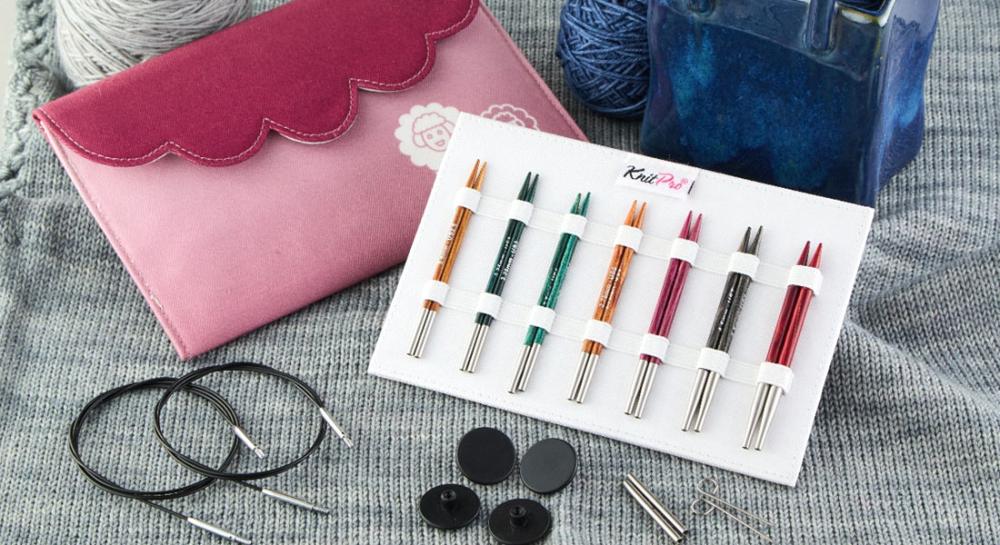
4. Purling on
If you're working in the round, such as casting on stitches for an underarm, knitted and cable cast-ons have to be worked from the wrong side of the work since they both add stitches to the beginning of the needle. What you're faced with then are purl bumps on the outside of the work.
This is perfectly fine if you're working on a reverse stockinette sweater pattern, for example. But if your project is mostly stockinette, you want to use a cast-on method that looks good on the outside. The solution to this is really simple: instead of knitting the stitches while casting on, you purl them.
Whether working the knitted, purled, or cable cast-on in the round, it is recommended to cast on one more stitch than the amount needed, then work the last cast-on stitch together with the next stitch to tighten the gap between new and live stitches.
Best for – Use on the purl side or at the beginning of a row with circular knitting needles. Whether you work with a fixed circular needle or interchangeable needles the cast on is perfect for your project.
Pros
- Looks good on the outside or stockinette side
Cons
- Purling
5. Chinese Waitress Cast-on
The cast-on with a funny name has a little story. It was taught to knitting book author Cap Sease's friend by a waitress in a Beijing restaurant. The Chinese Waitress Cast-on uses a knitting needle and a crochet hook to create a very smooth and stretchy cast-on that looks nice on both sides of the work. This makes it an ideal cast-on method for reversible projects, such as garter stitch.
Best for - At the start of your work or the beginning of a row in garter stitch or other reversible knitting pattern. Pair with circular knitting needles and a crochet hook of the same size.
Pros
- Very pretty
- Stretchy
- Reversible
Cons
- Takes a bit of practice
- Need to have a crochet hook handy
Binding Off in the Middle of a Row
Binding off stitches mid-row is commonly used for shaping necklines, armholes, or buttonholes. You can refer to our blog on how to cast off stitches in knitting.
Steps:
1. Knit the first two stitches.
2. Lift the first stitch over the second stitch and off the needle.
3. Continue knitting and passing over stitches until you’ve bound off the required number.
4. Continue knitting the rest of the row as instructed in your pattern.
Best for: Creating openings in your fabric like necklines and armholes with double-pointed knitting needles.
Combining Cast-On and Bind-Off in the Same Row
For buttonholes or decorative openings, you may need to bind off stitches in one row and cast on stitches in the next row.
Let’s take the Example of a Simple Buttonhole
Row 1 (Right Side): Knit to where the buttonhole should be, bind off the required number of stitches, then finish the row.
Row 2 (Wrong Side): Knit to the bound-off gap, use the backward loop or knitted cast-on method to add back the stitches, and finish the row.
With this guide, you’re ready to shape your knitting projects with confidence. With KnitPro knitting needles, crochet hooks and accessories, enjoy crafting. Choose knitting needles that suit your project and yarn.


